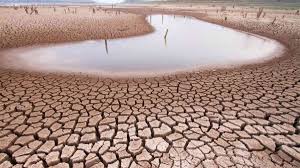The government has announced major drought relief efforts to support communities hit hardest by severe droughts. These initiatives aim to provide immediate assistance to farmers, rural communities, and areas suffering from water shortages.
With droughts affecting crops, livestock, and daily life, the new relief programs will focus on ensuring access to essential resources like water, food, and financial support. Let’s explore the key aspects of these efforts and how they will help those in need.
Why Are These Drought Relief Efforts Necessary?
Droughts can have devastating impacts on both agriculture and daily life. For farmers, it means struggling to grow crops and maintain livestock. For communities, it often leads to water shortages and economic hardships.
As water supplies dry up and temperatures rise, the government is stepping in to provide immediate relief to those affected by the crisis. The goal is to help farmers continue their work, keep communities stable, and prevent long-term damage to local economies.
Key Components of the Drought Relief Programs
The new drought relief efforts focus on several critical areas:
1. Emergency Water Supplies
One of the top priorities is ensuring that communities have access to clean drinking water. The government will provide:
- Water tankers to transport clean water to drought-affected areas.
- Mobile water units to support villages and towns facing severe shortages.
These efforts will help ensure that both people and livestock have enough water to meet their basic needs.
2. Financial Assistance for Farmers
Farmers are often the first to suffer during droughts, as water shortages impact their ability to grow crops and feed their animals. The government is offering financial assistance to help farmers cope, including:
- Low-interest loans to help them cover the costs of irrigation, feed, and other essentials.
- Grants to support farmers in drought-stricken regions who are at risk of losing their crops or livestock.
This financial support will help farmers maintain their operations during the drought and recover once conditions improve.
3. Subsidized Feed and Fodder
To keep livestock healthy during drought conditions, the government is providing subsidized feed and fodder. With limited grazing land and rising feed prices, this support will help ensure that farmers can continue to care for their animals without suffering financial losses.
4. Irrigation Infrastructure Support
The drought relief program also focuses on long-term solutions, such as improving irrigation systems. The government will invest in:
- Water conservation projects to make the most of limited water resources.
- Modern irrigation technologies, like drip irrigation, to help farmers use water more efficiently.
By supporting irrigation infrastructure, the government aims to minimize the impact of future droughts and help farmers maintain their productivity even in dry conditions.
5. Food Assistance Programs
Droughts can lead to food shortages, especially in rural areas that rely on local farming. To address this, the government is launching food distribution programs to ensure that communities have access to essential staples like rice, wheat, and vegetables.
This assistance will help families avoid hunger and malnutrition during the drought and provide a safety net until conditions improve.
How Will These Efforts Impact Affected Communities?
The new drought relief initiatives will provide immediate and long-term benefits to the communities hardest hit by the drought. Some of the expected outcomes include:
- Improved access to clean water for both people and livestock, preventing health issues related to water shortages.
- Financial stability for farmers who can continue their operations with government support, avoiding economic collapse.
- Better food security for rural areas, reducing the risk of hunger and malnutrition during difficult times.
These efforts are also designed to strengthen community resilience, ensuring that drought-affected regions can recover more quickly and are better prepared for future climate challenges.
The Importance of Ongoing Support
While these drought relief programs provide essential short-term aid, ongoing support is crucial to fully recover from the damage caused by drought. Farmers will need continued financial assistance, improved water management systems, and better access to resources in the coming months.
As climate change continues to impact weather patterns, droughts are likely to become more frequent and severe. Governments, communities, and individuals must work together to find long-term solutions to water shortages and drought-related challenges.
Conclusion
The launch of major drought relief efforts is a crucial step toward helping farmers and communities cope with the current crisis. By providing emergency water supplies, financial assistance, and food programs, the government aims to minimize the impact of the drought and support long-term recovery.
These relief efforts are vital in ensuring that affected regions can continue to thrive, even in the face of severe environmental challenges.
Unlock the thrill at 3k.top—where the jackpot excitement is just a click away!
